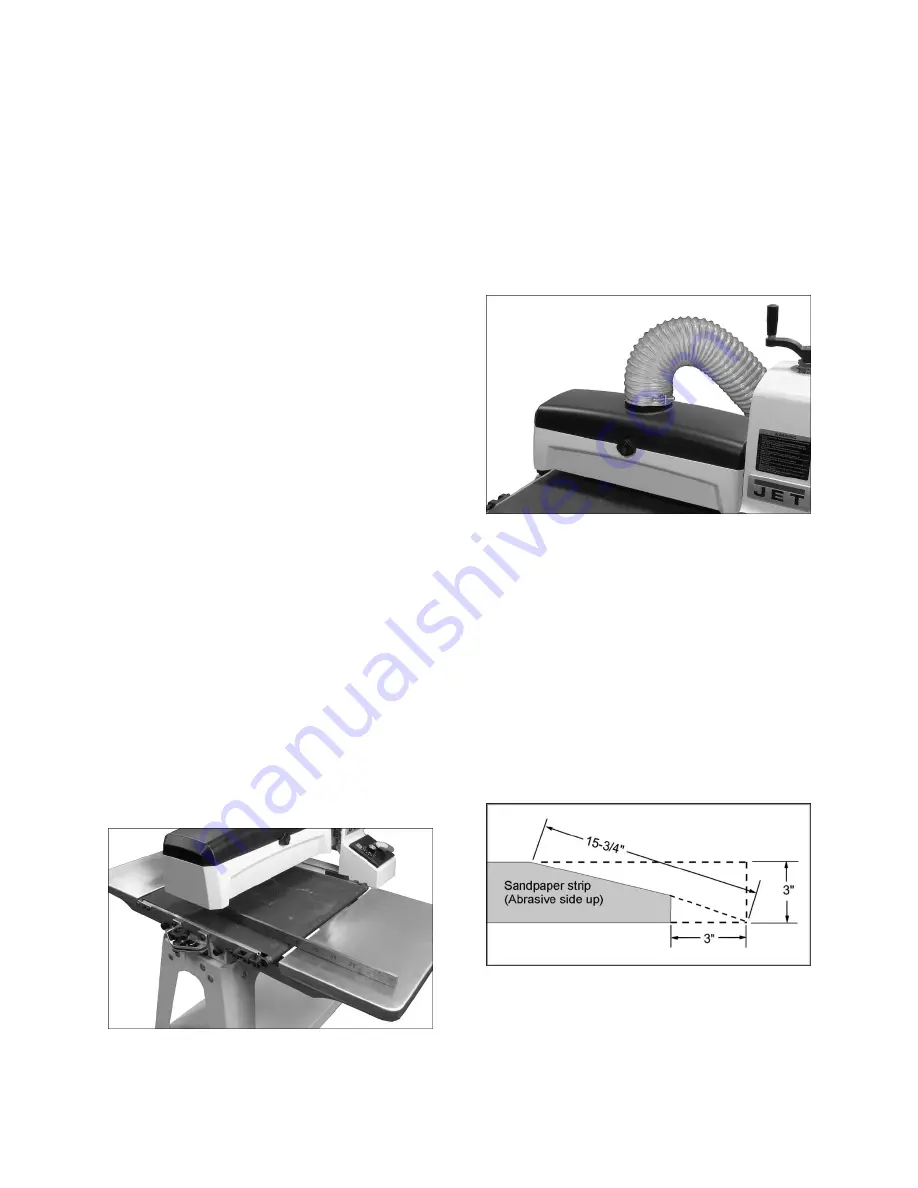
9
5. Position sander atop stand so that the four
threaded holes of base align with holes in the
stand rails (Figure 6).
6. Fasten base to stand (from beneath) with the
four screws and washers that you removed
from the plywood boards. Tighten screws
securely.
6.5
Infeed and outfeed tables
(optional accessory)
The sander must be bolted to the stand or a work
table when using these table extensions. Maximum
working load of each table is 35 pounds. Fasteners
are provided with the extension tables.
1. Install infeed and outfeed brackets (L, Figure 6-
3) to the threaded holes in sander base with
M8x16 socket head cap screws and flat
washers. Make sure left and right brackets are
oriented as shown. The brackets should be
flush against the base. NOTE: Long brackets
mount to front (infeed); short brackets to rear
(outfeed).
2. Place extension tables over brackets and
secure with M8x12 socket head cap screws and
washers.
Finger tighten only.
3. Position tables slightly below conveyor belt
surface for proper support of stock. To check
position, place a straight-edge on one side of
conveyor table under drum and extending out
over the extension table. Lower drum to
securely hold straight-edge in place. See Figure
6-4. Raise infeed/outfeed table until table
surface is slightly below conveyor belt surface.
Tighten screws on that side.
4. Reposition straight-edge to other side of table
and repeat.
If stock being sanded is bowed, warped or otherwise
inconsistent, be sure tables are lower than top of
conveyor table.
If stock slips on conveyor, the tables may be
positioned too high. Lower tables to allow stock to
remain in contact with conveyor.
Figure 6-4: extension table alignment
6.6
Dust collection
Dust collection is mandatory for a safe work
environment and extended abrasive life. The
JWDS-1632/1836 is equipped with a 4-inch dust
collection port. Secure a 4-inch dust collection hose
to the port with a hose clamp (Figure 6-5), and
connect to a high volume dust collector (minimum
400 CFM).
Note: Dryer vent hose is not acceptable
for this purpose.
A standard shop type canister (16 gal. or larger) can
be used for short periods of sanding time but
requires converting the hose size down to 2-1/2”. An
adaptor is required.
Figure 6-5 (hose and clamp not included)
6.7
Installing abrasives
Proper attachment of the abrasive strip to the drum
is critical to achieving top performance from your
drum sander.
An 80-grit, 3-inch wide abrasive strip is pre-installed
on the drum. Optional pre-cut (“Ready-to-Wrap”)
abrasives of different grits are also available; see
sect. 14.0
.
(TIP: If you are using an after-market abrasive, use
a new JET-supplied abrasive as a template to
quickly cut a new strip. Alternatively, a diagram is
supplied in Figures 6-6 and 6-7 showing trim
measurements.)
Figure 6-6: abrasive trimming –
JWDS-1632 ONLY
(not applicable to Ready-to-Wrap strips)










































